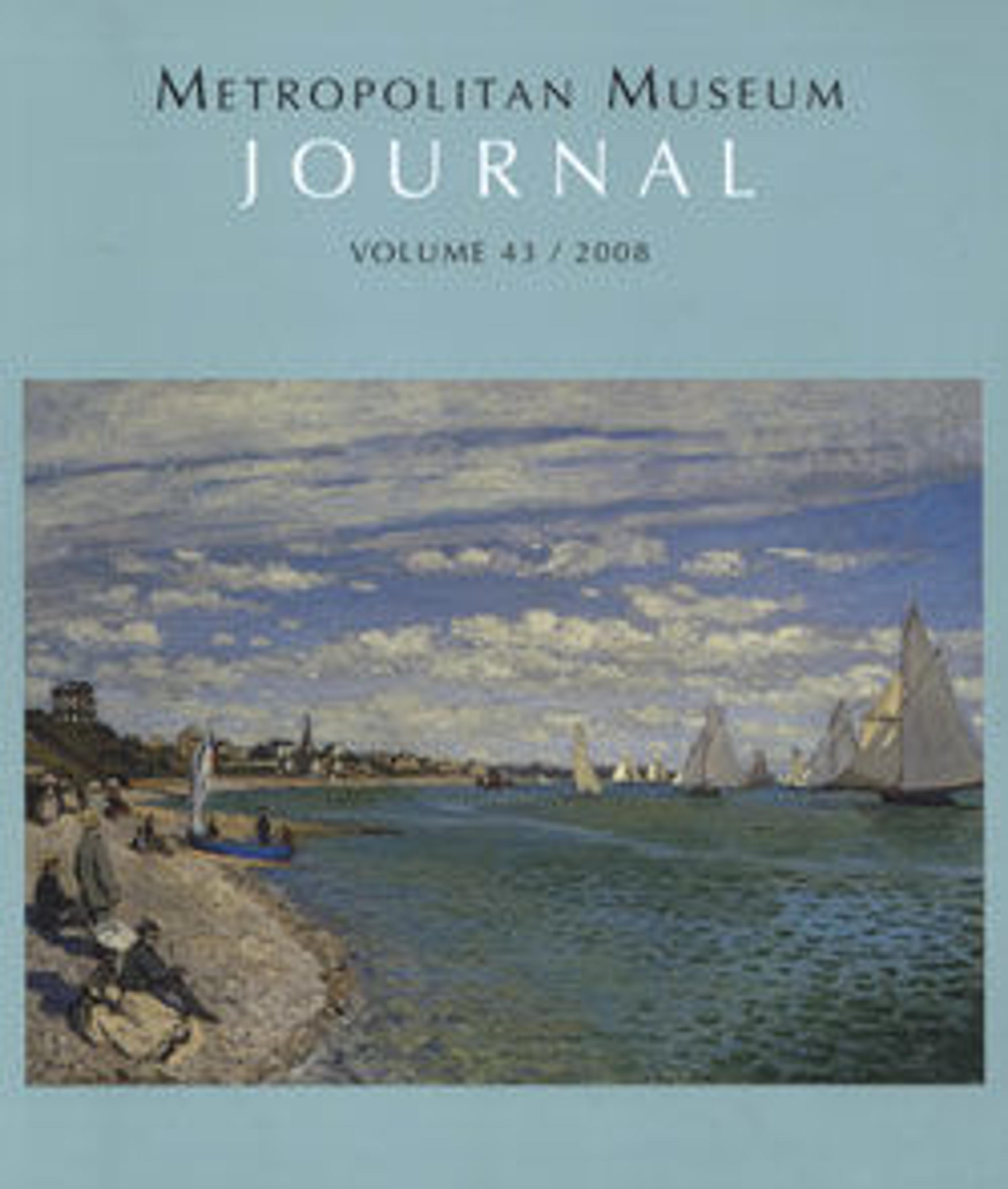Relief fragment with graffiti of two humans and animal heads
The monumental art and architecture of the Achaemenid period are best exemplified by the ruins of Persepolis, the large ceremonial capital of the empire originally built by Darius I (r. 521–486 B.C.) and expanded by his successors. Persepolis is located thirty miles northwest of Shiraz in the southwest Iranian province of Fars. There, structures like the "Hall of One Hundred Columns" and the "Throne Room of Darius and Xerxes" exhibit features characteristic of Achaemenid palace architecture—large square rooms, with ceilings supported by many columns. Some of the columns in the Throne Room have been reconstructed and stand more than sixty-five feet high.
The art found at Persepolis is not limited to grand, royally commissioned works. On a smaller scale, graffiti are quite common at the site. These minor inscriptions and sketches are mostly concentrated in the palace of Darius (or Tachara) and the Harem building. This fragment is part of the foot from a relief depicting Darius found inside the western entrance of his namesake palace. The piece was removed deliberately because it features a distinctly well-preserved example of graffiti on its smooth surface. Two bearded men, a lion’s head and part of a lion’s body are depicted, and reflect imagery typical of Greek painted vases. The delicate lines of the drawing were incised using a very fine point. The incisions appear below a layer of reddish purple paint which confirms a late 6th century B.C. date, and indicates that this illustration was completed by an artist working at the site during a phase of its construction.
The art found at Persepolis is not limited to grand, royally commissioned works. On a smaller scale, graffiti are quite common at the site. These minor inscriptions and sketches are mostly concentrated in the palace of Darius (or Tachara) and the Harem building. This fragment is part of the foot from a relief depicting Darius found inside the western entrance of his namesake palace. The piece was removed deliberately because it features a distinctly well-preserved example of graffiti on its smooth surface. Two bearded men, a lion’s head and part of a lion’s body are depicted, and reflect imagery typical of Greek painted vases. The delicate lines of the drawing were incised using a very fine point. The incisions appear below a layer of reddish purple paint which confirms a late 6th century B.C. date, and indicates that this illustration was completed by an artist working at the site during a phase of its construction.
Artwork Details
- Title: Relief fragment with graffiti of two humans and animal heads
- Period: Achaemenid
- Date: ca. late 6th century BCE
- Geography: From Iran, Persepolis
- Culture: Achaemenid
- Medium: Limestone
- Dimensions: 2 5/16 in. × 6 in. × 2 5/16 in. (5.9 × 15.2 × 5.8 cm)
- Credit Line: Rogers Fund, 1945
- Object Number: 45.11.17
- Curatorial Department: Ancient West Asian Art
More Artwork
Research Resources
The Met provides unparalleled resources for research and welcomes an international community of students and scholars. The Met's Open Access API is where creators and researchers can connect to the The Met collection. Open Access data and public domain images are available for unrestricted commercial and noncommercial use without permission or fee.
To request images under copyright and other restrictions, please use this Image Request form.
Feedback
We continue to research and examine historical and cultural context for objects in The Met collection. If you have comments or questions about this object record, please contact us using the form below. The Museum looks forward to receiving your comments.
